American Heart Association recommends that we eat at least two servings of fish each week, especially fish high in omega-3 fatty acids.(1) . You probably know that wild salmon is one of the healthiest fish choices. However, did you know that farmed salmon is also a healthy option?
This article covers what to look for when buying healthy farmed salmon. For detailed information on the nutritional differences between wild and farmed salmon, check out this comprehensive guide comparing wild and farmed salmon.
Healthy Farmed Salmon is:
- Raised without antibiotics
- Tested for chemical contaminants
- From a responsibly managed fish farm
What to look for when buying healthier farm raised salmon
1. Healthy Salmon are Raised Without Antibiotics
Antibiotics and other medicines are frequently used when raising farmed fish.
According tho the U.S. National Academy of Medicine, “there is a direct link between antibiotic use on farms and the spread of antibiotic resistant bacteria to human populations.”(2)
When measured, the residual antibiotic levels in farmed salmon are within regulatory limits.(3) However, the health impacts of chronic, low-level exposure to antibiotics and other medicines have not been evaluated. Learn more about antibiotic use in farming.
For the healthiest option, purchase salmon raised without antibiotics.
2. Healthy Salmon is Tested for Chemical Contaminants
When compared with wild salmon, farmed salmon have historically contained higher levels of toxic chemicals such as PCBs, dioxins, and other persistent environmental chemicals.(4)
These chemical contaminants come from the forage fish fed to farmed salmon.
How can you ensure the farmed salmon you are buying does not contain high levels of environmental contaminants? Some stores have policies that require their supplies to monitor for contaminants end ensure they are below the Environmental Protection Agency’s (EPA’s) current standards for seafood.
3. Healthy Salmon are Raised on a Responsibly Managed Fish Farm
Not all aquaculture (fish farming) systems are the same. Some fish farms are environmental responsible, and some are not. Improperly managed fish farms can result in unhealthy fish and polluted waters.
Thankfully, several groups are committed to helping create more sustainable aquaculture practices through robust certification processes.
Look to see that the farmed salmon, and other seafood, you are buying is certified by organizations such as:
- Aquaculture Stewardship Council (ASC)
- Global Sustainable Seafood Initiative (GSSI)
- Monterey Bay Aquarium Seafood Watch
- Whole Foods Market Responsibly Farmed Logo
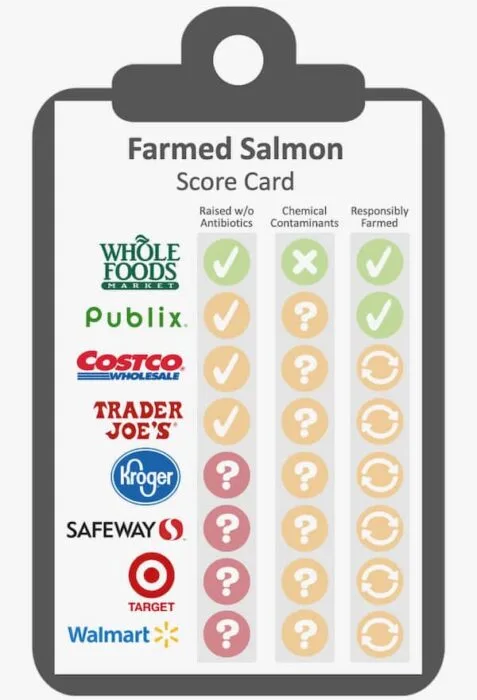
Who sells healthy farmed salmon?
Whole Foods Market

Whole Foods Market is the best place to buy farmed salmon. Period. You don’t need to read labels on the fish you buy at Whole Foods. All fish from Whole Foods meets our “healthy” requirements.(5)
Plus, with the Amazon acquisition of Whole Foods, their farmed salmon has been consistently priced at $9.99 per pound.
Salmon from Whole Foods is never given antibiotics. Additionally, Whole Foods prohibits their suppliers from using any other medicines, growth hormones, preservatives, or artificial coloring in the farmed salmon they sell.
Whole Foods salmon does not have high levels of toxic chemical contaminants. Every year, Whole Foods seafood suppliers are required to test for various environmental contaminants including PCBs and mercury. All contaminant levels must be below the EPA’s current standards for seafood.
Whole Foods has stringent standards for their farmed salmon suppliers. In fact, Whole Foods has developed their own internal standards to ensure farmed seafood is healthy and to protect the environment.(6)
Stores that may sell healthy farm raised salmon
Publix

Healthy farm raised salmon is available at Publix.
Publix typically sells a few different types of farm raised salmon, so it is important to read labels. “GreenWise” labeled salmon from Publix is raised without antibiotics and certified to be free of preservatives and other processing aids.
Additionally, GreenWise and Sustainably Sourced labeled salmon from Publix qualifies for a GSSI label for responsible aquaculture.(7)
Costco

Healthy farmed salmon is available at Costco.
Costco typically sells a few different types of farm raised salmon, so it is important to read the labels!
In the United States, the best salmon to buy at Costco is labeled “raised without antibiotics.”
In Canada, the best option available is organic farmed salmon. Note: Organic farmed salmon is not currently available in the US.
Specific information about salmon toxin levels is not available on Costco’s website.
As of today, Costco is working with their suppliers to implement ASC standards for responsibly farmed fish. Currently, only some of Costco’s farmed salmon comes from ASC certified suppliers.(8)
Trader Joes

Trader Joes sells farm raised salmon raised without antibiotics. However, additional information about Trader Joe’s farmed salmon is not available.
The latest information about Trader Joes standards is from 2013, and it states that they are in the process of working with their suppliers to generate standards.(9)
Avoid farmed salmon from these stores:
It is more expensive to raise farmed salmon with third party verified responsible farming practices. Additionally, salmon raised without antibiotics can be sold for a price premium.
Therefore, it is reasonable to assume no policies exist when retailers do not disclose information about antibiotic use, chemical contaminants and environmental responsibility.
Kroger
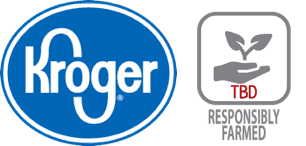
Kroger has a goal to source all of its seafood from farms certified sustainable in compliance with GSSI’s requirements by 2020. As of 2018, 89% of all farmed seafood meets this requirement.(10)
No information is available about the antibiotic policies for Kroger’s farmed salmon.
It is best to avoid farm raised salmon from Kroger until their antibiotic use policies change.
Supermarkets included under the Kroger name include: Fred Meyer, QFC, Harris Teeter, Pick ‘n Save, Smiths, Ralphs, Food 4 Less, King Soopers, Dillons, Roundys, Marianos, and Fry’s Food Stores.
Safeway
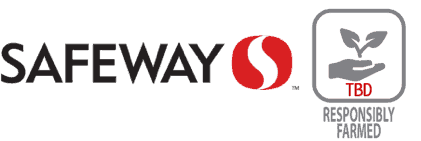
Specific information about farmed salmon from Safeway is not available on their website.
Safeway’s Supplier Sustainability Guidelines from 2015 states a goal of only selling seafood that is Green or Yellow rated according to the Monterey Bay Aquarium’s Seafood Watch20 criteria.(11) However, no information can be found on whether or not this goal has been met.
Additionally, there is no information about the antibiotic policies for Safeway’s farmed salmon.
It is best to avoid farm raised salmon from Safeway until their policies change
Note: Albertsons abides by the same guidelines as Safeway.
Target
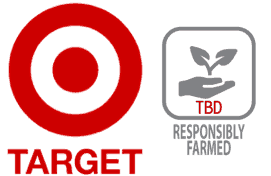
Specific information about farmed salmon from Target is not available on their website.
Target’s current Sustainable Seafood Policy states a policy of selling seafood rated Green or Yellow according to the Monterey Bay Aquarium’s Seafood Watch20 criteria or from a supplier committed to a credible improvement process.(12)
However, no information for Target’s farmed salmon antibiotic policy can be found online.
It is best to avoid farm raised salmon from Target until their policies change.
Walmart

Specific information about farmed salmon from Walmart is not available on their website.
Walmart current Seafood Policy states a goal of sourcing all farmed seafood from fisheries certified by GSSI or from a supplier committed to a credible improvement process by the year 2025.(13)
However, no information is available about the antibiotic policies for Walmart’s farmed salmon.
It is best to avoid farm raised salmon from Walmart until their policies change.
Conclusions about farm raised salmon
Several healthy farmed salmon options are available at major grocery stores.
Whole Foods offers the most comprehensive seafood policy and are my first choice when buying seafood.
However, you can buy healthy farmed salmon at Publix, Costco, and Trader Joes as long as you read labels.
If you shop at any of the other major supermarkets listed, avoid their fresh farmed salmon. Instead, buy a frozen wild or antibiotic-free farm raised salmon option.
Pin article for later:
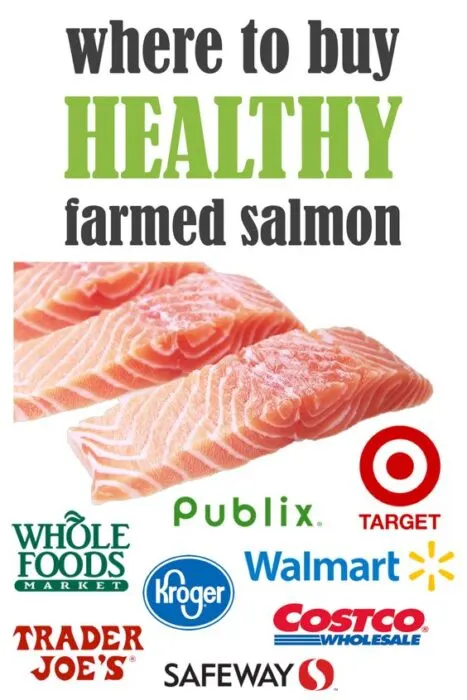
References:
- Eating fish twice a week reduces heart stroke risk, Heart.org website (link)
- Antibiotic Resistance in Humans and Animals, National Academies of Science Website (link)
- Vaccinating Salmon: How Norway avoids antibiotics in fish farming, World Health Organization Website (link)
- Global Assessment of Organic Contaminants in Farmed Salmon, Science, 303, 226-229 (link)
- Whole Foods Market Quality Standards Farmed Finfish and Shrimp 2019 (link)
- Seafood Sustainability FAQ, Whole Foods Website (link)
- Seafood Sustainability, Publix Website (link)
- Sustainable Fisheries, Costco Website (link)
- About Trader Joes Seafood, Trader Joes Website (link)
- Kroger’s 2019 Environmental, Social & Governance Report, Kroger Website (link)
- Safeway Supplier Safety Guidelines and Expectations, Safeway Website (link)
- Target Sustainable Seafood Policy, Target Website (link)
- Walmart Seafood Policy, Walmart Website (link)
